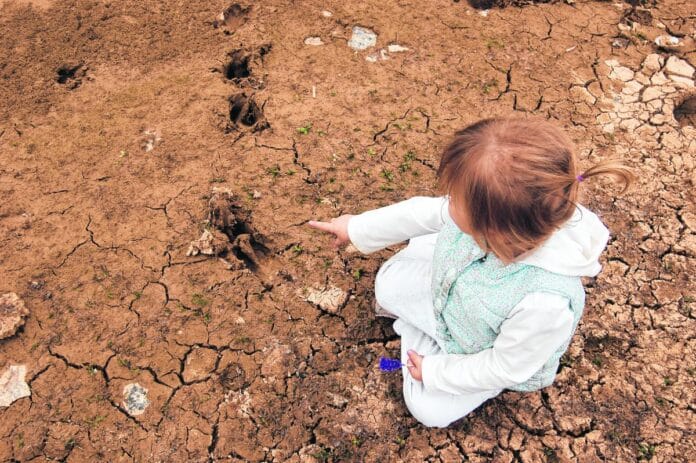The first time I ever went canoeing was on Sugar Creek with my dad and brother. My most vivid memory of the experience is when our canoe flipped in a rapid. I must have been about 8, making my brother 5. When we went over, my dad scrambled for my brother, leaving me to figure it out for myself. I’m sure being older had a lot to do with it, but I like to think even then, my dad knew I would be just fine, that I could take care of myself. He was right, I survived. Nature taught me that I could overcome a challenging situation.
Nature provides endless opportunities to test yourself. Every landscape offers a set of scalable challenges, from hiking a trail to paddling a river to catching a fish. There was a time when completing these tasks was a matter of survival. Today, they’re for the most part recreation. While we may not need to catch fish to live anymore, some of us still need to catch fish to feel alive. The same may go for those who climb a mountain or bring home a basket of wild mushrooms. Testing ourselves against nature and surviving, or better yet, thriving, builds confidence in your ability to conquer any obstacle. Sadly, fewer and fewer children are experiencing the lessons of nature today.
When I was a kid, we had so much freedom to roam. I’m talking in the late 1980s and early 1990s. Not that long ago. It’s hard to believe how much has changed between my youth and my childrens.’ In the summer, we would take off on our bikes and stay gone all day. We’d ride a couple of miles to the store to buy candy and ice cream. At 10, my buddies and I would take my grandpa’s jon boat with a trolling motor and fish all around a couple hundred-acre lake. And nothing bad happened. Sure, some bones were broken, and deep cuts were stitched, but we learned from those mistakes and grew from the lessons pain provided. We didn’t have cell phones. Our parents didn’t hover, texting us all day to see where we were and what we were doing. And we didn’t achieve gratification from cyber attention in the form of social media. We built real relationships through authentic experiences while growing up together.
Today, I just don’t know what is going on. One of my life-long best friends and I recently caught up in Colorado and spent a day fishing in the Rocky Mountain National Park. We had moved out west together nearly 20 years ago. I left. He stayed. Now he also has two daughters, same as me, but his are still little, 8 and 5. He’s a teacher. A gym teacher. So, he deals with kids every day, all day. He sees what we are experiencing at home with our children magnified through hundreds of children. And he assures me the challenges we face with connecting our children to life outside is a societal challenge of a magnitude much, much greater than those faced by previous generations of parents.
Sure, there were changes between my grandfather’s and father’s generations, and there were changes between my father’s and mine. But in no way comparable to the changes between mine and my children’s. My parents caught the beginning of the technological revolution. They occasionally had to demand I turn off the Nintendo, but they also had to demand I stop fishing and come home for dinner. Our kids today, and when I say our kids, I mean the entire generation of youth in America, don’t know life before devices. They’ve held connectivity to the world in the palm of their hands since someone first let them watch Baby Einstein on an iPad.
Take a drive through any college campus. Be vigilant, because those kids often don’t look up from their phones before stepping into traffic. When you see a herd of them slowly progressing down the sidewalk with all eyes glued to a screen and headphones muffling all sounds of the world around them, you can’t help but feel much of what it was to be human up until this point in time is now lost. Interpersonal communication is fading fast.
This has been a catastrophic year on Mount Everest. At least a dozen people have died, due in large part to a traffic jam at the peak. Numerous factors are to blame, but one is the amount of time each climber is using to take photos for their Instagram account. As if climbing to the top of the Earth isn’t enough gratification. Now, the real justification for overcoming this incredible challenge is little dopamine shots derived from the number of people who like your post. It’s heartbreaking.
If you’re waiting for the positive turn in this narrative, I’m sorry to disappoint you. I just spent a week at two conferences with hundreds of fellow outdoor industry professionals. Numerous sessions were devoted to the decline of youth engagement in the outdoors. Many of these people don’t have kids at home. So, they say things like, “just take away your kids phone or limit their time.” But it’s not that easy. These kids’ lives are organized by their devices. They are emailed homework assignments. Their friends are people they’ve never met. Everything has turned upside down, as us parents who grew up making stick bows and forts from cedar branches don’t know how to fight this war against an enemy so powerful and all consuming. And if both parents don’t feel the same way, or one parent is themselves a social media addict, then there is basically no hope of influencing your children in another direction.
I’ve come to understand it’s a war that can’t be won. But small battles can provide little victories. Maybe your kid won’t leave the phone behind to go hiking, but you can encourage them to download an app that identifies trees and plants. Perhaps they’ll download an interactive map that teaches them a bit about orienteering. I don’t know what else to do besides looking for ways for integrate the outdoors into their tech, because as much as I dream about turning their phones into skipping stones and watching in glee as they sink into the darkest depths of a deep river hole, I have come to accept there’s no going back.
See you down the trail.





